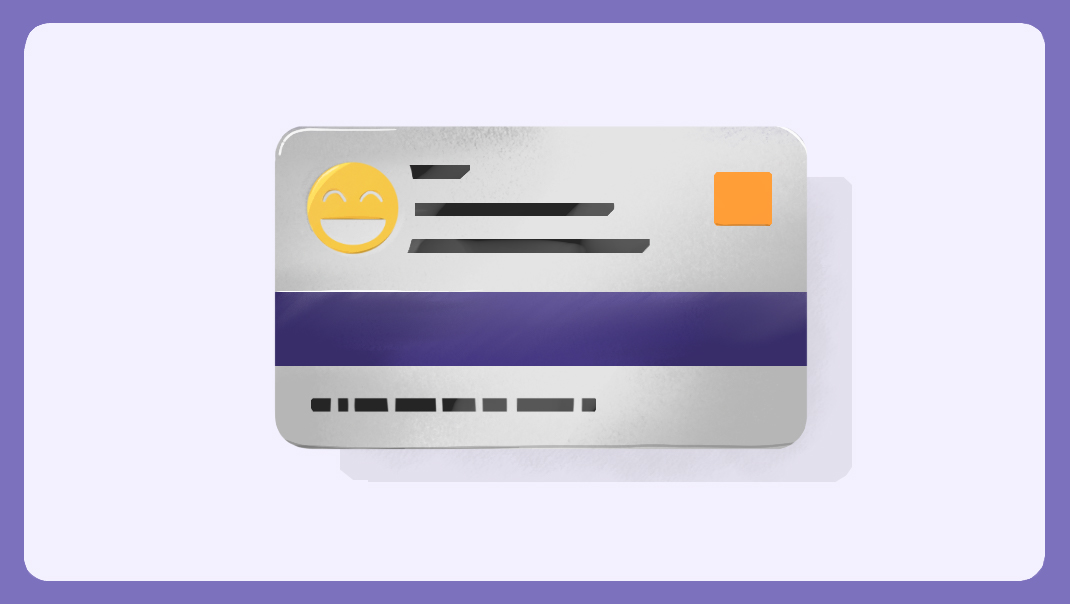These seven Qualtrics alternatives offer either more features to build surveys, additional research tools, a lower cost, and a cleaner user interface. These alternative platforms also include question types that Qualtrics does not have, allowing you to collect better data. This article contains a detailed review of each of these seven Qualtrics alternatives.
| Alternative | Enterprise Price in 2023 | Selling Features |
|---|---|---|
| SurveyKing | Starts at $500 annually. | Research tools, NPS, and custom built features on request. |
| Alchemer | Full access is $1,895 annually per user. | Research tools and advanced reporting options. |
| QuestionPro | Contact for quote. The highest tier is $1,188 annually; it doesn’t include research questions like MaxDiff. | Unique question types, custom scripting. |
| Sogolytics | Contact for a quote. The highest consumer tier is $1,188 annually | Customer and employee experience modules. |
| Medilla | Contact for a quote. | Customer experience, great AI (natural language processing). |
| Satmetrix | Contact for a quote. | Customer satisfaction modules. |
| Sawtooth | $4,500 – $11,990 annually. | MaxDiff, Conjoint, Menu-Based Conjoint, custom scripting. |
Qualtrics Best Features
While Qualtrics had frustrating limitations, they do have some upsides. These are things that you should consider when looking for an alternative.
- Great support – Support seems to respond very quickly and thoroughly to questions.
- Automatic translations that can be easily edited on the fly.
- Industry benchmarks for NPS and CSAT.
- Consulting services.
- Some unique question types that are useful like constant sum, drill down, image heat map, and text highlighter.
- TURF analysis for MaxDiff.
Qualtrics Disadvantages
A significant disadvantage of Qualtrics is its pricing. As of April 2023, the lowest tier package is $1,440 per user, billed annually. There is no option for month-to-month. In addition, this package only includes 1000 responses and gives you no access to research tools like MaxDiff.
Another significant disadvantage to Qualtrics is that it is not user-friendly and has a clunky UI. For example, users can “preview a question,” which seems unnecessary, and there is no color contrast between pages. Of course, you can add blocks that contain contrast, but that gets even more confusing because new blocks are also new pages.
Adding advanced questions is tricky. For example, to create a simple MaxDiff survey, you can’t just create a survey and add a MaxDiff question; you have to go to the “catalog” of products, scroll down to click “Product XM” and then choose a MaxDiff project. This same logic applies to a lot of other question types as well, like Conjoint.
The builder lacks a few things for question types. No ability to rank a top 3 of 10 items. No specific Likert or semantic differential scale.
They don’t have an actual Van Westendorp or Gabor Granger question for pricing studies. Instead, they give you an input box for Van Westendorp with no graph in the results showing the pricing curves. Gabor Granger is possible, but you’d need a custom script using existing question types.
The reporting section is also clunky. For example, even after submitting one test response, you’ll see a loading screen telling you the data set is updating.
For advanced analytics, the reporting could be more intuitive. The report section has an excellent option at the top to add filters. You can add some nice logic for rules here. But then, for comparisons, you need to “add a report breakout.” But the breakout doesn’t give you advanced options. For example, if you did a simple net promoter score survey with the likelihood of a purchase from 1-5, you’d have to create a breakout for all 1-5 values, not just 1-2, if you wanted to take a quick look at lower scores.
There is an option to build an excellent report. You can quickly add the data you see in the results to create a PDF. But the options can sometimes confuse you; for example, you can add a blank chart, but the chart needs to pull metrics from a question.
The UI has been updated over the years to make it less clunky. But overall, the system is challenging to use. You will get frustrated creating even simple surveys.
A Comprehensive List of Qualtrics Alternatives
Top 7 Qualtrics alternatives in 2023:
For each of these alternatives listed above, we include a detailed review. These detailed reviews will help you understand the benefits and drawbacks of each tool to make informed decisions when moving platforms.
Free Qualtrics Alternatives
Qualtrics targets small businesses with a free account, so you could be reading this article just needing a free tool without limitations. The list above would be our recommendations for free Qualtrics alternatives. (or low cost)
Alternative Research Tools
You might be searching for a Qualtrics alternative because you conduct different types of research. Here are some additional research tools that could help you:
- Hotjar – Focuses mainly on website feedback. They have widgets you can use to record a user’s session and heatmaps showing clicks. They offer simple survey tools and very elegant website feedback widgets you can easily embed.
- Fullstory – Similar to Hotjar. They also provide a lot of tools for mobile apps. They have some excellent features to track errors and bottlenecks in your applications
- Think with Google – A platform that lets you search for trends. One nice feature is searching for an audience that likes certain things and then viewing the most popular YouTube channels related to the audience; this is useful for preliminary market research.
- PointerPro – While not a research tool, PointerPro offers many great options for creating assessments. They have a fantastic feature ReportR to create custom PDFs that can be sent to respondents after they take an assessment.
1. SurveyKing
Our Rating:
SurveyKing is the best alternative to Qualtrics because they offer various research tools like MaxDiff and Conjoint, tailored reports for Net Promoter Score, great support, and are willing to build custom tools upon request. Their API access also allows organizations to automate nearly any tasks associated with survey research.
A feature on SurveyKing not available on any other platform, including Qualtrics, is a 3D MaxDiff question. Often used for personality assessments, it combines choice-based conjoint and MaxDiff into a single question.
SurveyKing also offers some lesser know but valuable pricing question types, like Van Westendorp and Gabor Granger, that Qualtrics doesn’t provide.
The survey builder, distribution pages, and results are all much easier to access. Very intuitive, clean, and straightforward.
For enterprise users, a great selling feature of SurveyKing is the essential white label feature; you can use your domain to make it look like SurveyKing is your platform!
Their enterprise package starts at $300 annually, well below the cost of other tools.
SurveyKing Key Selling Features
- Easy to use, low cost, with lots of research tools.
- A separate Net Promoter Score Module with automatic text categorization.
- Truly anonymous surveys, including a unique anonymous email collector, are perfect for employee surveys.
- White label surveys (eg, surveys.yourcompany.com as the URL)
- Share reports with one click
- API access
SurveyKing Drawbacks
- No question types like heatmap, constant sum, or text highlight.
- No industry benchmarks to compare your data to.
- No TURF analysis for MaxDiff.
2. Alchemer
Our Rating:
Formerly known as SurveyGizmo, Alchemer is a solid alternative to Qualtrics. They offer essential research question types, lower and more transparent pricing, and a much cleaner UI.
Their research tools include MaxDiff and Conjoint. The Conjoint question consists of a market simulator in Excel that you can download. They also have other question types like a constant sum and cascading dropdowns. But they do not have pricing research questions like Gabor Granger or Van Westendorp. In addition to these research tools, Alchemer also offers a Chi-Sqaure test when doing a segment report.
Alchemer also offers consulting services with a focus on third-party integrations. For example, they can help you upload data to Tableau or JIRA to get the most out of the survey platform.
The white label feature they have is also pretty nice. They are one of the few tools to offer the ability to use your domain instead of just a subdomain.
Alchemer’s pricing is reasonable. The full-access package starting at $1,800 annually, will give you access to all research questions and reporting tools. You need to contact sales for other specific packages like customer experience and the right enterprise package(which includes more support, consulting, and paneling services).
Alchemer Key Selling Features
- Easy to use and lower cost than Qualtrics.
- Questions include constant sum, cascading dropdown means, image heatmap, and text highlights.
- A true white label feature.
- Lots of reporting options with complex comparisons can be made. Reports can be shared with one click.
- Kiosk/offline mode surveys.
- Consulting services.
Alchemer Drawbacks
- No pricing research questions like Gabor Granger or Van Westendorp
- Their MaxDiff question doesn’t use any statistical model on the backend; they only offer simple counts.
- No external industry benchmarks.
3. QuestionPro
Our Rating:
A tool geared for research QuestionPro has a robust feature set. They have a ton of unique question types and an excellent reporting section. In addition, their UI is relatively clean, although it could be more user-friendly.
Some unique types include a lookup table, a store locator, Captcha, a complex matrix with sliders and dropdowns in one row, and a timer. They offer all the research questions like MaxDiff, Conjoint, Gabor Granger, and Van Westendorp.
The reporting section has a nice set of features. For example, you can create trend reports, TURF analysis, and segments. For Conjoint, they include a nicely laid out report that lets you filter and sort the most valued profile concepts.
QuestionPro does have a very convenient audience feature. You can specify some generic panel requirements like gender or job role. For more complex projects, you can request a custom quote. The paneling feature here is much easier to use than Qualtrics.
The main downside to QuestionPro is the cost. For access to their research suite, even a small project can be as much as $5,000 annually. (what we were quoted for one Gabor Granger project – access good for a whole year). In addition, their customer experience module starts at $2,000 a month.
QuestionPro Key Selling Features
- Lots of question types, including all of the essential question types.
- A separate customer experience module with sentiment analysis.
- Robust reporting options.
- Offline mobile app response collection.
- More straightforward UI than Qualtrics.
Question Pro Drawbacks
- Cost. For smaller projects, their research suite may be cost-prohibitive.
- Skip logic is hard to set up.
- No specific anonymous survey options.
- No white label option.
4. Sogolytics
Our Rating:
Formerly Sogosurvey, Sogolytics is a decent Qualtrics alternative. They offer a few nice question types like numeric allocation, signature, and Captcha.
They offer a custom web popup to collect responses on your website easily. And an easy-to-use text message collector.
The reporting options are okay. Creating a segment report, trends, and text analysis is straightforward. They do have a nice feature to email a report. But this platform offers no advanced statistical reporting options.
Sogolytics Key Selling Points
- Lower price point than Qualtrics.
- Has an easy-to-use text message collector.
- Ability to share reports with a unique email option.
Sogolytics Drawbacks
- No research questions or advanced statistical reporting.
- A little hard to use at times – To create a web link, you need to click a few options to make one instead of simply having one displayed automatically—small things like being unable to bold or style answer options using a rich text editor.
5. Medallia
Our Rating:
Medallia looks like a great Qualtrics alternative, as they have dedicated modules for customer experience and satisfaction. Their account management tool is one convenient module for B2B companies. You can easily segment data by the customer along with all the different aspects relating to accounts, like billing, installation, etc.
One of the great things about Medallia is that their customer experience module tags opened ended answers using natural language processing. Once customers leave feedback, the platform automatically categorizes the responses, allowing you to address problem areas quickly. They also provide a list of suggestions on what areas your customer satisfaction team should focus on using natural language processing.
Medallia has not responded to our requests for a product demo or a quote. Pricing might be out of reach for small to medium-sized businesses as they focus on only prominent brand names.
Medallia Key Selling Points
- Dedicated customers experience modules.
- Impressive natural language processing for text analysis.
- Automated notifications so poor feedback can be addressed quickly
- Website feedback widgets.
- Share reports with stakeholders by job role or department.
Medallia Drawbacks
- Pricing is not transparent; they respond selectively to customer requests.
- No research questions like MaxDiff or Conjoint to conduct product research.
6. Satmetrix
Our Rating:
When browsing around for platforms focused on customer experience, Satmetrix was another Qualtrics alternative. They have great tools for tracking Net Promoter Score and natural language processing for text answers.
Satmetrix also has options for post-call surveys, a unique selling feature compared to these other Qualtrics alternatives. You can embed recorded customer calls right into the survey results.
Satmetrix Key Selling Points
- Dedicated customer experience modules.
- Natural language processing to categorize text answers.
- Great tools to integrate customer service phone calls and post-call surveys.
Satmetrix Drawbacks
- Pricing is not transparent.
- No research question types in the survey builder.
7. Sawtooth Software
Our Rating:
If you want to move away from Qualtrics and conduct research studies, then Sawtooth software is a great option. They are known for offering statistical models in survey research.
Sawtooth specializes in MaxDiff and Conjoint. For MaxDiff, they offer a unique type called Bandit MaxDiff, which makes it easy to test 100 or 1000 attributes by only showing attributes relevant to the user. Conjoint offers a custom menu-based option, a more flexible alternative to the simple card/choice-based Conjoint.
They offer advanced reporting options like Latent Class Analysis, TURF analysis for MaxDiff, and market simulators for Conjoint.
The pricing is transparent—$ 4,500 annually for basic MaxDiff and Conjoint experiments. For advanced research methods like menu-based Conjoint and access to their advanced reporting using Lighthouse Studio, the cost would be $11,990. They also offer smaller packages if you want to run a MaxDiff experiment.
Sawtooth Key Selling Points
- Great research tools like MaxDiff and Conjoint with various options.
- Advanced statistical tools like latent class analysis and TURF analysis.
- You can add additional survey questions alongside your research questions like multiple choice, ranking, or constant sum. The ranking question does allow you to rank a top 3 from 10.
- Consulting services.
Sawtooth Software Drawbacks
- A high price point for a smaller business.
- No pricing research like Gabor Granger or Van Westendorp.
- Limited survey design and building options.











